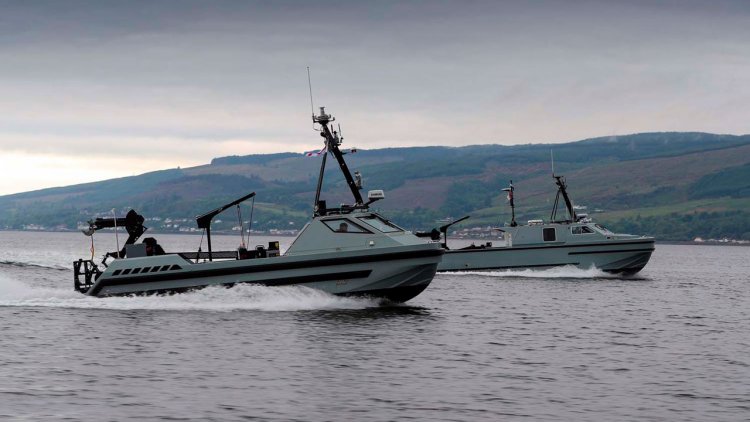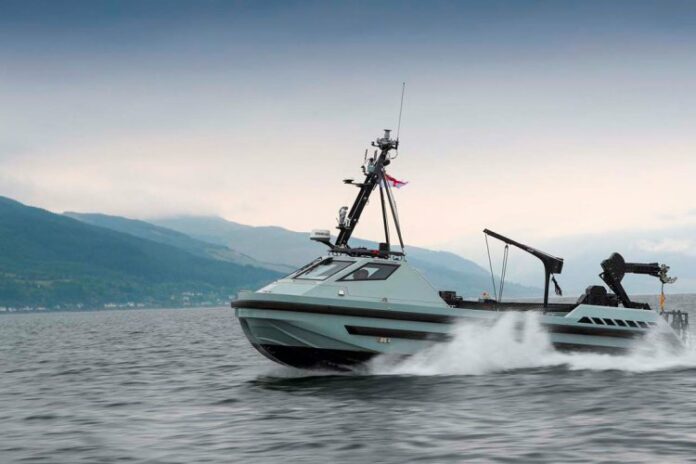RNMB Hebe, named after the ancient Greek goddess of youth, has now joined sister vessels Harrier and Hazard as part of the Royal Navy’s crewless minehunting programme Project Wilton.
Hebe, four metres longer than her sisters and with more technology on board, is able to work in isolation on operations but also integrated with existing equipment. Together, the three vessels are key components in the future of minehunting operations for the navy.
The boats are capable of working in different configurations – manually, remotely or autonomously – to detect and classify mines and maritime ordnance. The Project Wilton team are currently undertaking comprehensive trials and a capability development programme to ensure they are ready to deliver route survey operations.

Lieutenant Commander Ross Balfour, Officer-in-Charge of Project Wilton, said:
“RNMB Hebe is the final piece in the jigsaw of Project Wilton’s maritime capability. The vessel is a 15-metre Vahana boat, four-metres longer than the other Project Wilton vessels. AEUK have made significant upgrades resulting in Hebe having an organic command, control and communications capability which allows the autonomous control of her sister vessel Harrier. She also has the ability to operate towed sidescan sonar to map the seabed.”
From the relative comfort of Hebe, mine countermeasures experts can coordinate and control the boats or monitor autonomous offboard sensors. They also have the option of controlling the vessels from a land-based remote-control centre.
The entire system is highly flexible and rapidly deployable, capable of being loaded onto trucks and transported to wherever it is required to conduct survey and mine hunting operations.



